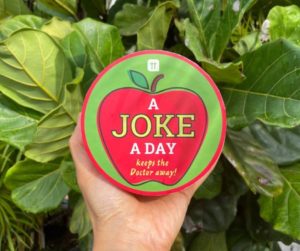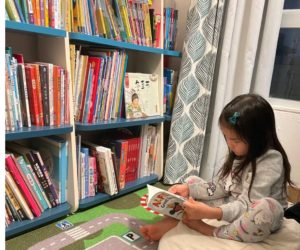感谢您的查阅!抱歉我们暂时没有把这篇文章翻译成中文。如有所需我们会乐意翻译,敬请提供回饋。谢谢您的支持!
Recently, I noticed that although my 5-year-old son Axel loves listening to me reading Chinese stories, he has been less enthusiastic in learning to read on his own despite he is being taught at school. Through speaking to his teachers, I gathered he is taught to read Chinese by memorisation – his teacher would read out the words from simple picture books and then ask him to repeat, and after a few rounds of repetition and practice would expect him to remember how to read and write.
At his age, it must be a rather monotonous and difficult exercise to remember dissimilar words one after another? No wonder Axel wasn’t interested in learning Chinese. But then I remembered, wasn’t this how most of us learnt when we were young too? A scene immediately emerged from my memory – Weekly Dictation in class, which I didn’t complain at the time, but I remember it as a dreadful time of the week and it certainly wasn’t something that intrigued me to find out more outside of class. That was the moment when I decided to embark on a mission to have it differently for my kids.
Children learn best when they are self-motivated to do so (as opposed to external incentives such as rewards from parents), and this is only possible if they find the topic is of interest to them. Ways to help our children arouse interests include: 1) maintaining curiosity, e.g. show them things they do not already know 2) making things relevant to them 3) presenting via creative means, e.g. games, simulation, video. We can certainly apply these in learning Chinese too!
The more I read about Chinese characters/Hanzi (汉字), the more captivating I found the topic is myself! Thanks to my son (genuinely) I have now enrolled and am attending a course to learn more about Hanzi in relation to children’s learning! It is a very intriguing and in-depth course that covers a tried and tested syllabus to guide children to learn Chinese, currently adopted in some Waldorf schools in various countries, but for the purpose of this blog post I will just reference and interpret key points for ideas sharing.
One of the first things I learnt and resonated with was that children are born lovers of drawing and looking at pictures, and will therefore find ancient scripts such as Oracle Bone Scripts (甲骨文) and Jin Wen (金文) naturally appealing to read:

Pictographs / 象形字

Ideographs/指事字
As you can see above, ancient scripts are often a) pictures of things they represent (Pictographs/象形字), and b) ideas they represent (Ideographs/指事字), most of which our children have seen or came across at young age. It is therefore natural for them to make the connection to modern Hanzi and sub-consciously remembering these words without realising once the link is shown to them and established.
Tip 1: Arousing and maintaining curiosity – illustrate how individual Hanzi’s was evolved from ancient scripts
I did an experiment with Axel and showed him the following two Oracle Bone Scripts and asked him what he thought they represent. He looked at them and straight away told me the right answer! And just like that he now remembers how to read these two words once the connection was made. Most importantly, it has aroused Axel’s interests in finding out more about how other Hanzi were evolved!

Try playing this little game/test with your children too! Answer: The script on Left = 尿; Right = 屎. Can you see a man semi-standing-squatting doing his business? Hehe. (For reference, the proven golden period for children to be able to ‘see’ ancient scripts and learn via 字感教学is 6-8 years old.)
How about the two set of scripts below? As a mother, I think the derivation of these two words are rather interesting, and so timely it’s Mother’s Day soon hence my choice of words for illustration! The first Oracle Bone Script (left) represents ‘Woman’ / ‘女’, depicting how an ancient woman would sit – in a kneeling position with both hands placed crisscrossed on the lap.


The second Oracle Bone Script (right) was derived from ‘女’ and represents ‘Mother’ / ‘母’. You may see similarities in these two scripts and spotted that ‘母’ has two extra dots in comparison with ‘女’. These depict the breasts in women, which provide milk for our children since ancient times, what an aptly symbolisation!
Tip 2: Making it relevant for our children
As most of our children are still being taught Chinese the traditional method at school, I think we could supplement to the learning at home, sharing with them the Hanzi corresponding ancient scripts and origins, just like telling them another story. Each child is different, so you may want to start with words or topics that amuse your child, e.g. vehicle, animals, Chinese zodiac signs (十二生肖). It will be more effective and meaningful for them when it is something they can relate to in their daily lives. Here is a great free website for checking out more Hanzi ancient scripts and evolution to what we write today: http://www.vividict.com


Tip 3: Presenting via creative means
As shared in our earlier blog post, children learn best having done it with their own hands – “I hear and I forget, I see and I remember, I do and I understand.” Try drawing out these ancient scripts together with your children! To add to the fun, use Chinese calligraphy brush (毛笔) to draw! Axel loved it and found it a fun experience. Encourage your children to form a painting using the ancient scripts learnt!

Drawing with ancient scripts using Chinese calligraphy brush.
In my opinion, being able to arouse our children’s curiosity in learning Chinese will be a far more impactful, interesting and happier learning experiencing than learning the characters by rote. I have been learning so much more than what I set out to learn about Hanzi, from word origins and formation structures to poems, Chinese culture and history etc! It has been a bonus indeed which I shall share this journey with my children and definitely more with you too in the future!





